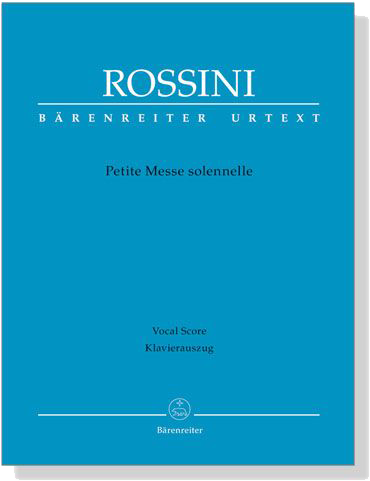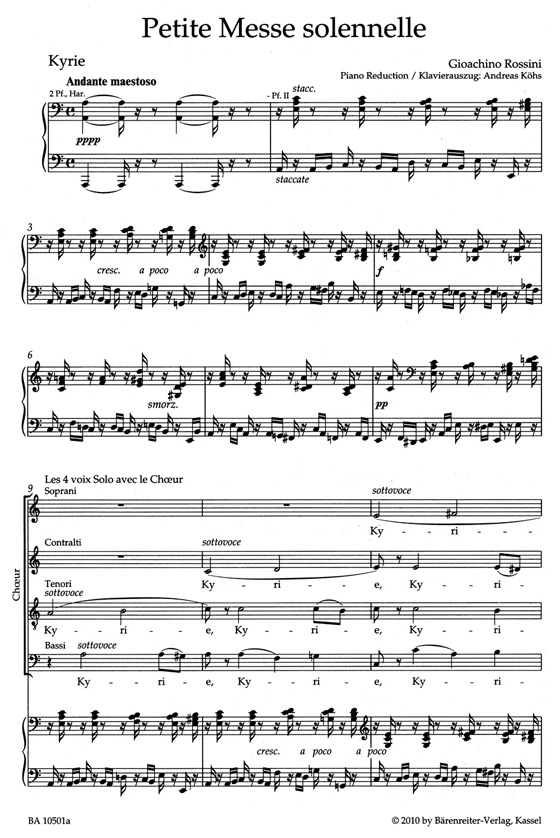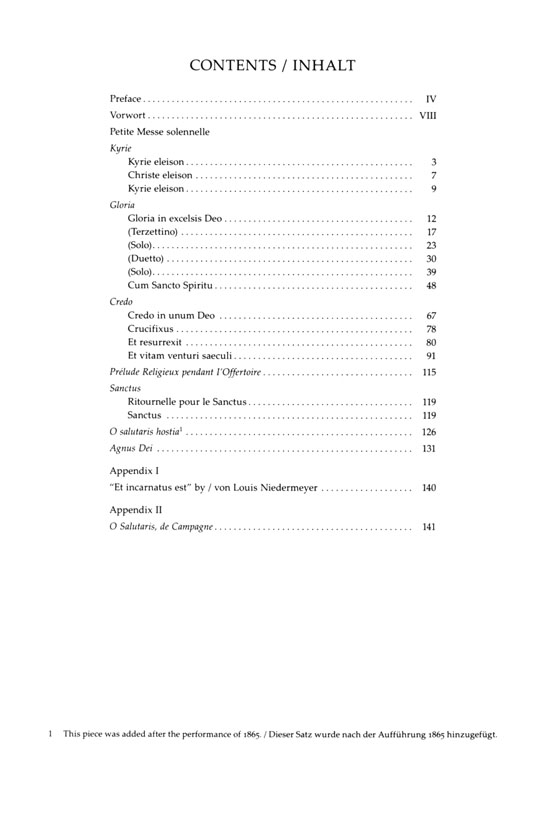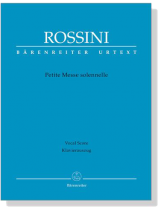Rossini【Petite Messe solennelle】Vocal Score , Klavierauszug






Rossini【Petite Messe solennelle】Vocal Score , Klavierauszug
-
19世紀上半葉浪漫時期義大利作曲家羅西尼「小莊嚴彌撒 Petite Messe solennelle」Vocal Score , Klavierauszug。
- 庫存狀況: 尚有庫存
- 出版社: Bärenreiter
- 原文書名: Petite Messe solennelle
- 作者: Gioacchino Rossini
- 編訂者: Brauner, Patricia B. / Gossett
- 系列名稱: Works of Gioachino Rossini, Vol. 3
- 總書頁: 145
- 商品編號: 9790006536849
- ISBN: 9790006536849
NT 748
NT 748
未稅: NT 748
簡介
【簡介】
The “Petite Messe solennelle” is the finest work of Rossini’s late years. He composed it between 1863 and 1864 at the age of 71 as a commission for Countess Louise Pillet -Will for the consecration of her private chapel, where the work received its first performance in March 1864. Together with the “Stabat mater”, the mass is one of the composer’s mostimportant sacred works.
The unusual instrumentation with two pianos and harmonium is entirely in keeping with the Neapolitan keyboard tradition of the 18 th century which was cultivated in France in Rossini’s day. It forms a distinct contrast to the style of large-scale sacred compositions as written by, for example, Liszt and Bruckner. Rossini explained that he wrote the later orchestral version of the work dating from 1867 out of concern that if he did not do this, other composers might orchestrate the mass too heavily in later arrangements.
The piano reduction by Andreas Köhs is extremely idiomatic and largely preserves the charming character of the unusual instrumentation.
- Based on the Urtext of the series “Works of Gioachino Rossini”
- Foreword in two languages (Eng/Ger)
- With a separate harmonium part and one part for pianos I and II
The “Petite Messe solennelle” is the finest work of Rossini’s late years. He composed it between 1863 and 1864 at the age of 71 as a commission for Countess Louise Pillet -Will for the consecration of her private chapel, where the work received its first performance in March 1864. Together with the “Stabat mater”, the mass is one of the composer’s mostimportant sacred works.
The unusual instrumentation with two pianos and harmonium is entirely in keeping with the Neapolitan keyboard tradition of the 18 th century which was cultivated in France in Rossini’s day. It forms a distinct contrast to the style of large-scale sacred compositions as written by, for example, Liszt and Bruckner. Rossini explained that he wrote the later orchestral version of the work dating from 1867 out of concern that if he did not do this, other composers might orchestrate the mass too heavily in later arrangements.
The piano reduction by Andreas Köhs is extremely idiomatic and largely preserves the charming character of the unusual instrumentation.
- Based on the Urtext of the series “Works of Gioachino Rossini”
- Foreword in two languages (Eng/Ger)
- With a separate harmonium part and one part for pianos I and II
目錄
Song List:
‧Gloria
‧Credo
‧Prélude Religieux pendant l'Offertoire
‧Sanctus
‧O salutaris hostia
‧Agnus Dei
‧Appendix I: "Et incarnatus est" by Louis Niedermeyer
‧Appendix II: O Salutaris, de Campagne
詳細規格
| 書籍資訊 | |
| 記譜法 | 五線譜(一般) |
| 原文語言 | 拉丁文 |
| 特徵 | 西洋古典 |
| 適用對象 | 高級 |
| 古典作曲家 | Rossini, G. 羅西尼 |
| 時期與風格 | 浪漫主義 |
| 裝訂 | 平裝 |
| 形式 | 譜 |
| 外型尺寸 | 約A4尺寸 |

